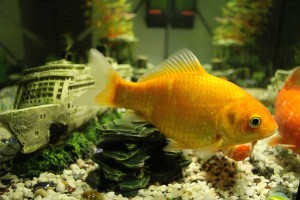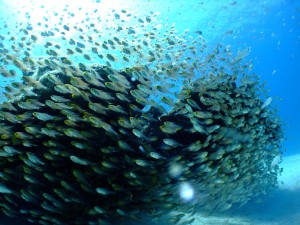Fish is often referred to as an ultimate superfood. Oily fish such as salmon, sardines, and mackerels are packed with heart healthy omega-3 fatty acids. There are many other health benefits of eating fish beyond their omega fatty acid content. We will address some of the commonly asked questions about wild caught and farmed raised fish here in this blog.
Fish is not only a tasty source of protein but it’s also gaining popularity around the world for its health benefits. There is also plenty of confusion and controversies going around regarding fish farming and wild caught fish.
If you have ever wondered what types of fish to eat, which fish is best for the environment or if you would benefit more from eating farmed raised fish versus wild caught fish, than keep reading because we are going to answer some of those commonly asked questions and much more in this blog.
Is wild caught fish more nutritious?
There isn’t much difference in nutritional value between a wild caught fish and farmed fish. In terms of calories, protein and most other nutrients, a wild caught rainbow trout, for example, is identical to a farm raised rainbow trout. Based on what the fish are fed and how it was raised, there can be slight differences.
However, farmed fish often have higher levels of fatty acid. (Wild or Farmed Fish: What’s Better? | SparkPeople). Fish farms can control the omega-3 fatty acids in fish by controlling the food given to the fish that converts to Omega-3 fatty acids.
Should we worry about contaminants?
 Pelleted processed feed for farmed fish is often made with smaller processed fish like anchovies or other smaller fish. These pelleted fish feeds often contain industrial chemicals from processing. They can also spread disease if they were made with wild caught fish from polluted or contaminated water.
Pelleted processed feed for farmed fish is often made with smaller processed fish like anchovies or other smaller fish. These pelleted fish feeds often contain industrial chemicals from processing. They can also spread disease if they were made with wild caught fish from polluted or contaminated water.
Polychlorinated biphenyls (PCB) which is a potentially carcinogenic chemical, found ten times higher in farmed fish than in wild-caught fish. Also, more chemical toxins are found in farmed salmon than in the wild caught fish. Chemical pesticides, herbicides and processed foods can contaminate and pollute the waters and cause serious health issues in humans.
What about Antibiotics?
There is a wide use of antibiotics in fish farms. Researchers have found that many of the fish farms use antibiotics with their fish feed on a regular basis to protect fish from diseases. Excessive and preventative antibiotic use is common practice in the salmon farming industry. According to the Farmed And Dangerous website, this unplanned use of antibiotics can become a problem for human beings.
“Frequent use of antibiotics in aquaculture and other industries poses a risk to human health by allowing disease microbes to become resistant to antibiotic treatments – making it more difficult to treat human disease.”
How much fish should you eat?
 We should include a wide variety of fatty fish in our diet for our heart health and also to get a supply of lean protein. Species of fish that are especially rich in omega-3 fatty acids include salmon, mackerel, sardines, sturgeon, tuna, mullet, bluefish, anchovy, herring, and trout.
We should include a wide variety of fatty fish in our diet for our heart health and also to get a supply of lean protein. Species of fish that are especially rich in omega-3 fatty acids include salmon, mackerel, sardines, sturgeon, tuna, mullet, bluefish, anchovy, herring, and trout.
Very few of us have enough fish in our regular diet. The American Heart Association has recommended that people eat fish rich in omega-3 fatty acids at least twice a week. ( Mayo Clinic)
Keep in mind if eating wild caught fish, particularly from inland sources, that environmental pollutants can accumulate in a fish’s body. The National Resource Defense Council has recommendations of the numbers and frequency to eat various types of fish from different regions to avoid Mercury toxicity. (Mercury Levels in Fish | NRDC)
Conclusion:
Fish is one of the healthiest foods you can find, if raised in a sustainable way. The fish farming industry could impact the environment if too much processed food, antibiotics, pesticides, and chemicals are used while raising them. The best way to ensure maximum benefits from fish is to eat fish at least twice a week; fish that were grown in a natural environment and fed natural foods. We, as consumers, should eat sustainable seafood, by making sure that our food comes from sustainable farms and fisheries.
Do you have a question or comment regarding this article? Please post these in the comment box below. We would appreciate your feedback on our Facebook page.
You could also reach us at: (303) 495-3705 or Click here to Book A Meeting.
Source: WorldWide Aquaculture
Related articles and resources:
- Fish: the ultimate superfood
- Could Indoor Fish Farming Help you Live Longer? | WorldWide Aquaculture
- 7 Surprising Health Benefits of Eating Fish | WorldWide Aquaculture
- 5 Approaches to Making Aquaculture Sustainable | WorldWide Aquaculture
- A Guide to Eating Sustainable Seafood | WorldWide Aquaculture
- Farmed And Dangerous
- Mercury Levels in Fish | NRDC



